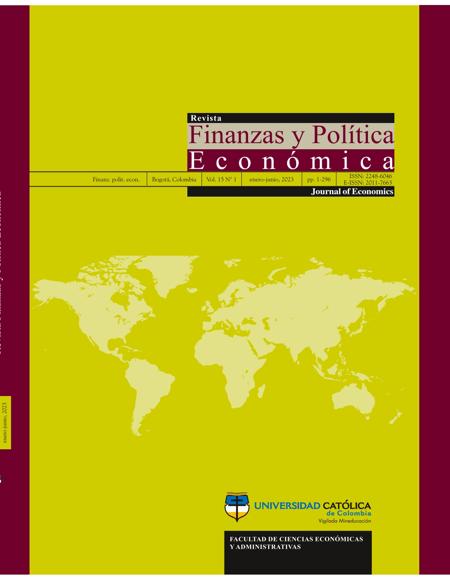
This work is licensed under a Creative Commons Attribution-NonCommercial-ShareAlike 4.0 International License.
This journal is licensed by a Creative Commons Attribution License (CC BY-NC-SA 4.0) Attribution-Non Commercial 4.0 International. For the CC licenses, the principle isthe creative freedom. This system complements the copyright without opposing it, conscious of its importance in our culture. The content of the articles is the responsibility of each author, and does not compromise in any way, to the journal or the university. It allows the transmission and reproduction of titles, abstracts and full content, with academic, scientific, cultural ends, provided acknowledgment of the respective source. This work cannot be used for commercial purposes.
They journal does not charge authors for submission or publication.
Abstract
With an area that covers 1.14 million square kilometers, Colombia is the fourth largest country of South America. With about 14% of the world’s biodiversity, it is one of the most ecologically diverse nations. Numerous freshwater resources, the sixth-largest primary forest area in the world, mostly in the Amazon basin, and a wide range of mineral resources are among Colombia's abundant natural resources. It is also the third-largest producer of coffee in the world, and its coastal regions are home to an increasing number of African palm trees. The population of Colombia is 68% urban and 32% rural. Nearly fifty
million people live in Colombia, and as of 2021, almost 20% of the population resided in the rural sector (World Bank, 2021). The concentration of land ownership in Colombia is among the highest in the world and in Latin America is second only to Paraguay in terms of unequal land distribution. The internal armed conflict that has torn across the nation for over 70 years has both caused and resulted in inequality in access to land, which is intimately tied to rural poverty (OXFAM International, 2013).

References
García Sierra, A. (2015, May 25). “Colombia importa el 28% de sus alimentos: presidente de la SAC”. El País. https://www.elpais.com.co/economia/colombia-importa-el-28-de-sus-alimentospresidente- de-la-sac.html
Ministerio de Comercio, Industria y Turismo (2022). Acuerdos comerciales vigentes. https://www.mincit.gov.co/estudios-economicos/seguimiento-tlc/seguimiento-vision-nacional/acuerdos-comerciales-vigentes
OXFAM International (2013). “Divide and Purchase”: how land ownership is being concentrated in Colombia. https://www.oxfam.org/es/node/10130
PIB International. (2018). So much land in the hands of so few. https://pbicolombia.org/2018/01/02/so-much-land-in-the-hands-of-so-few/
Progresive International (2022). The Goernment of Life. https://progressive.international/wire/2022-08-09-may-the-division-of-latin-america-come-to-an-end/en
World Bank (2021). Rural population (% of total population)





























